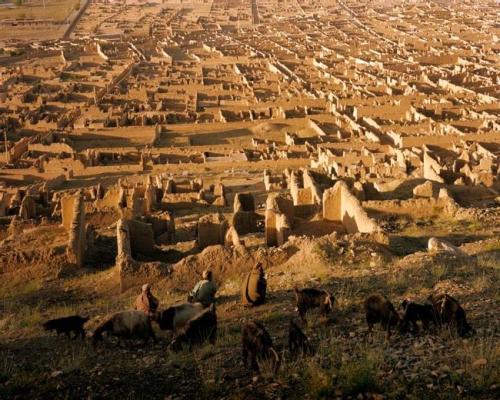
Massacre and Mass Rape in Afshar (February 10-11, 1993)
Afghanistan Justice Project
Reading time: (Number of words: )
All the versions of this article: [English] [فارسى]
The Context of the Operation
The Afshar operation of February 1993 represented the largest and most integrated use of military power undertaken by the ISA up to that time. There were two tactical objectives to the operation. First, Massoud intended, through the operation to capture the political and military headquarters of Hizb-i Wahdat, (which was located in the Social Science Institute, adjoining Afshar, the neighborhood below the Afshar mountain in west Kabul), and to capture Abdul Ali Mazari, the leader of Hizb-i Wahdat. Second, the ISA intended to consolidate the areas of the capital directly controlled by Islamic State forces by linking up parts of west Kabul controlled by Ittihad-i Islami with parts of central Kabul controlled by Jamiat-i Islami. Given the political and military context of Kabul at the time, these two objectives (which were largely attained during the operation) provide a compelling explanation of why the Islamic State forces attacked Afshar.

Responsibility for the abuses committed during the operation
The forces that launched the offensive in west Kabul on February 10-11, 1993 all formally belonged to the ministry of defense of the ISA. The minister of defense and de facto commander-in-chief of the ISA at the time of the Afshar operation was Ahmad Shah Massoud. He had overall responsibility for planning and command of military operations. He directly controlled the Jamiat-i Islami units and indirectly controlled the Ittihad-i Islami unit. Massoud secured the participation of the Ittihad-i Islami units through agreement with Abdul Rasul Sayyaf, the leader of the party. Although the Ittihad units had been given Afghan Army formation numbers, commanders in the field took their orders from senior Ittihad commanders and Sayyaf himself. Sayyaf acted as the de facto general commander of Ittihad forces during the operation and was directly in touch with senior commanders by radio. In this sense, Sayyaf shares equal command and control responsibility with the top Jamiat military leadership.
Given the pattern of violence and ethnic tension that had preceded the operation, the general commanders could and should have anticipated the pattern of abuse that would result when launching an offensive into a densely populated Hazara majority area.. Furthermore, as fighting took place in an area barely two kilometers from the general command post, and field commanders were equipped with radio communications, the general commander must have known of the abuses taking place in Afshar as soon as they started. Both Massoud, together with his senior commanders, and Sayyaf failed to take effective measures to prevent abuses before the operation commenced, or to stop them once the operation was underway.
While it has not been possible to identify individual commanders responsible for specific instances of execution or rape, the Afghanistan Justice Project has been able to identify a number of the commanders who led troops in the operation. Testimony indicates that both Jamiat and Ittihad troops committed abuses. Although some of the commanders were only involved in legitimate military actions, capturing and securing a designated objective, commanders who took place in the operation on the ground have a case to answer to determine whether they restrained their troops from abuses, or whether they and their men actively participated in the summary executions, rape, arbitrary detentions and other abuses that occurred during the operation.
The Islamic State, through Defense Minister Ahmad Shah Massoud and leader of factional ally, Abdul Rasul Sayyaf, committed the following military forces to participate in the Afshar operation.
Jamiat-i Islami commanders and units
Mohammad Qasim Fahim, director of intelligence, with responsibility for special operations in support of the offensive and participating in planning of the operation. Anwar Dangar, commander of a division level unit of mujahidin from Shakkar Darra, Shamali, named by numerous witnesses as leading troops in Afshar that carried out abuses on the first two days of the operation.
Mullah Izzat, commander of a division level unit of mujahidin, from Paghman, named by numerous eye witnesses as leading troops in Afshar that carried out abuses on the first two days of the operation.
Mohammad Ishaq Panshiri, commander of a brigade level unit of mujahidin (lewa) that, according to witnesses, participated in the assault Haji Bahlol Panshiri, commander of a brigade level unit (lewa) that, according to witnesses participated in the assault Baba Jullunder Panshiri, commander of a brigade level unit (lewa) that participated in the assault Khanjar Akhund, Panshiri, commander of a battalion level unit (ghund) that participated in the assault Mushdoq Lalai, battalion level, participated in the assault Baz Mohammad Ahmadi Badakhshani, commander of a division level unit that participated in the assault, attacking from Qargha
Related Articles

Poems for the Hazara
The Anthology of 125 Internationally Recognized Poets From 68 Countries Dedicated to the Hazara
Order Now










